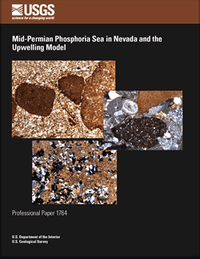The Phosphoria Sea extended at least 500 km westward and at least 700 km southwestward from its core area centered in southeastern Idaho. Throughout that extent it displayed many characteristic features of the core: the same fauna, the same unique sedimentary assemblage including phosphate in mostly pelletal form, chert composed mainly of sponge spicules, and an association with dolomite. Phosphoria-age sediments in Nevada display ample evidence of deposition in shallow water. The chief difference between the sediments in Nevada and those of the core area is the greater admixture of sandstone and conglomerate in Nevada. Evidence of the western margin of the Phosphoria Sea where the water deepened and began to lose its essential characteristics is located in the uppermost part of the Upper Devonian to Permian Havallah sequence, which has been displaced tectonically eastward an unknown distance. The relatively deep water in which the mid-Permian part of the Havallah was deposited was a sea of probably restricted east-west width and was floored by a very thick sequence of mainly terrigenous sedimentary rocks. The phosphate content of mid-Permian strata in western exposures tends to be relatively low as a percentage, but the thickness of those strata tends to be high. The core area in and near southeastern Idaho where the concentration of phosphate is highest was separated from any possible site of upwelling oceanic waters by a great expanse of shallow sea.


